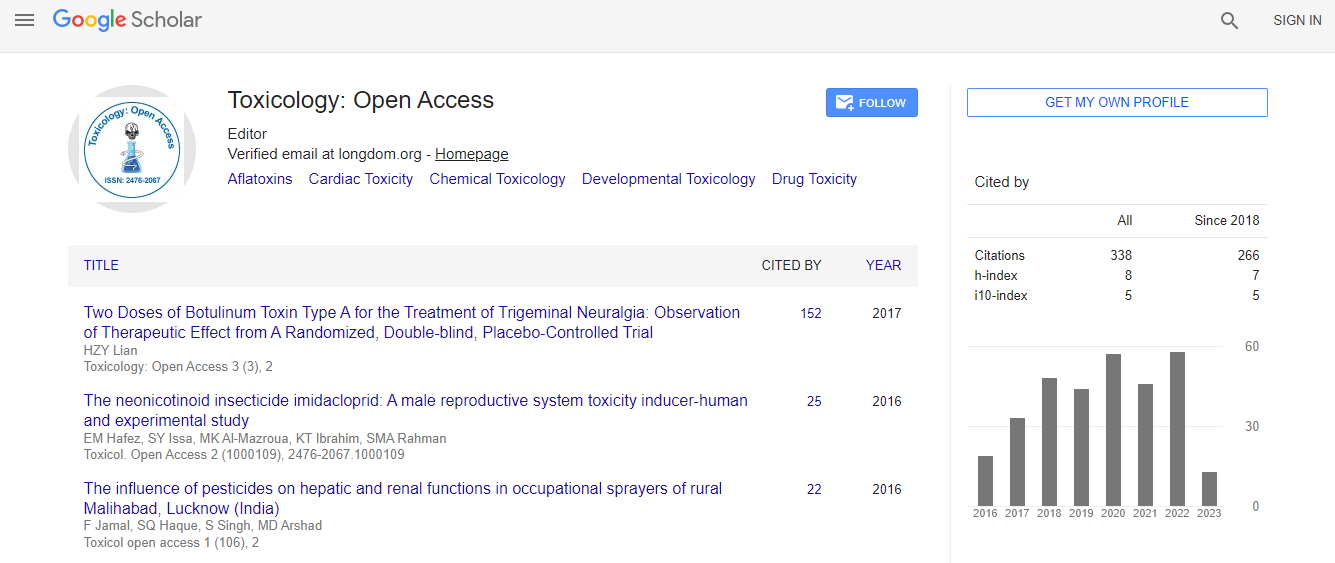Research Article
Comparative Studies of Chemical Composition, Antioxidant and Antimicrobial Potentials of Essential Oils and Oleoresins Obtained from Seeds and Leaves of Anethum graveolens L.
Sunita Singh1*, SS Das1, G Singh Marina Perroti1, Carola Schuff1 and César A N Catalan2
1Chemistry Department Deen Dayal Upadhyaya Gorakhpur University Gorakhpur, 273009, UP, India
2Faculty of Biochemistry, Chemistry and Pharmacy, Institute of Organic Chemistry, National University of Tucumán, S. M. de Tucumán T4000INI, Argentina
- *Corresponding Author:
- Singh S
Chemistry Department Deen Dayal Upadhyaya Gorakhpur University Gorakhpur, India
Tel: (91)5512270301
Fax: (91)551-2340459
E-mail: oceans.singh@gmail.com
Received Date: October 10, 2016; Accepted Date: January 08, 2017; Published Date: January 18, 2017
Citation: Singh S, Das SS, Perroti GSM, Schuff C, Catalan CAN (2017) Comparative Studies of Chemical Composition, Antioxidant and Antimicrobial Potentials of Essential Oils and Oleoresins Obtained from Seeds and Leaves of Anethum graveolens L.. Toxicol Open Access 3:119. doi:10.4172/2476-2067.1000119
Copyright: © 2017 Singh S, et al. This is an open-access article distributed under the terms of the Creative Commons Attribution License, which permits unrestricted use, distribution, and reproduction in any medium, provided the original author and source are credited.
Abstract
The chemical composition, antioxidant and antimicrobial potentials of essential oils and oleoresins obtained from dill (Anethum graveolens L.) seeds and leaves have been studied. The isolated essential oils and oleoresins were analyzed by gas chromatography coupled with mass spectrometry. The antioxidant activity of essential oils and oleoresins in comparison with synthetic antioxidants were evaluated using different antioxidant assays namely peroxide, thiobarbituric acid values. The antioxidant potentials were further confirmed using other methods such as ferric thiocyanate method in linoleic acid system, scavenging effect (%) on DPPH radical and metal chelating activity. Total phenolic content was also calculated using Folin-Ciocalteau method. Their antimicrobial activity was investigated using various methods on an array of microorganisms. Carvone (47.2%) was the major component in seed essential oil whereas dillapiole (90.2%) was the main component of leave essential oil. The oleoresins were mainly having a major fraction of carvone, dillapiole and oleic acid. Both essential oils have shown excellent antioxidant activity. The seed essential oil showed excellent antimicrobial activity against Aspergillus flavus and Fusarium graminearum in food poisoned method. Significant antibacterial activity was recorded for essential oils against Staphylococcus aureus and Bacillus subtilis while nominal inhibitory effects were observed against Escherichia coli and Pseudomonas aeruginosa.

 Spanish
Spanish  Chinese
Chinese  Russian
Russian  German
German  French
French  Japanese
Japanese  Portuguese
Portuguese  Hindi
Hindi 